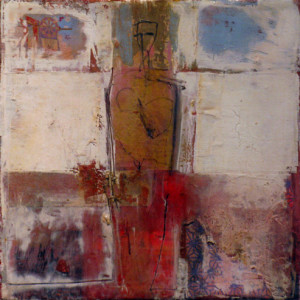 From 1984 to 1988, Audry Kalman studied at the Ontario College of Art and Design in Toronto, Canada, where she majored in textile and surface design. Upon graduation she accepted an internship in New York at a large fabric company. Once she returned to Toronto, her focus shifted to fine arts, which subsequently led her to study abroad at the Hungarian Academy of Fine Arts in Budapest, Hungary.
From 1984 to 1988, Audry Kalman studied at the Ontario College of Art and Design in Toronto, Canada, where she majored in textile and surface design. Upon graduation she accepted an internship in New York at a large fabric company. Once she returned to Toronto, her focus shifted to fine arts, which subsequently led her to study abroad at the Hungarian Academy of Fine Arts in Budapest, Hungary.
Audry has participated in several group shows throughout Toronto and has also had several solo exhibitions at the Lennox Contemporary Gallery. Presently, Audry has been primarily focusing on commission work both privately and commercially.
While her work has varied from a more abstract form to figurative, it continues to be influenced by her studies in textile design combined with her late father’s extensive collection of antique rugs, wall hangings, icons, and artifacts from primitive and ancient cultures. Mingled with her own Canadian and Hungarian heritage, these influences reach deeply into her own perceptions as an artist.
 Her most recent paintings focus on the female figure, which embodies a single distorted, rough and almost decomposed figure illuminated with complementary colours and textures. These recent works are a strong contrast to Kalman’s earlier paintings in the The Dancers Series. The figure in these paintings resembled a more child-like image, similar to a cut-out paper doll. This body of work was inspired by a childhood memory of a relative who was particularly skilled with scissors; he would fold a piece of wax paper many times over and masterfully cut the folded paper and transform it into these ‘dancing figures’. In this series, the canvases and the dancers are connected in an endless pattern, perpetuating her memory.
Her most recent paintings focus on the female figure, which embodies a single distorted, rough and almost decomposed figure illuminated with complementary colours and textures. These recent works are a strong contrast to Kalman’s earlier paintings in the The Dancers Series. The figure in these paintings resembled a more child-like image, similar to a cut-out paper doll. This body of work was inspired by a childhood memory of a relative who was particularly skilled with scissors; he would fold a piece of wax paper many times over and masterfully cut the folded paper and transform it into these ‘dancing figures’. In this series, the canvases and the dancers are connected in an endless pattern, perpetuating her memory.
This repetitive imagery resonates with the artist’s greatest childhood influences. Her studies in textile design combined with her father’s varied art collection have clearly influenced her method of painting. Kalman constructs her canvases by adding various types of papers and fabrics, distressing and reworking the canvases several times, revealing previous layers, much as a multi-coloured woven fabric, resulting in a rich tactile effect.
Kalman’s work is in many private collections including Canada, United States, England, and Israel.

Leave a Reply